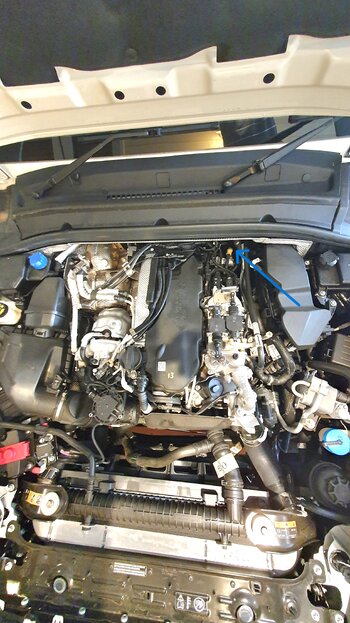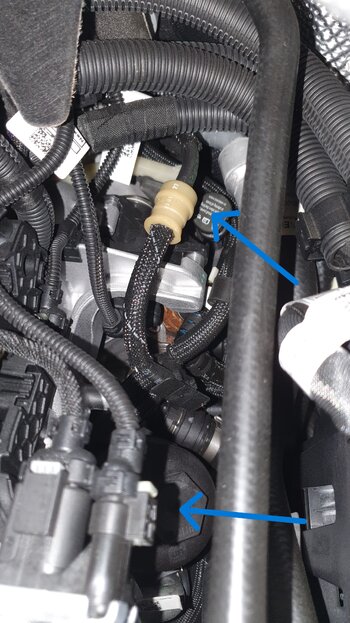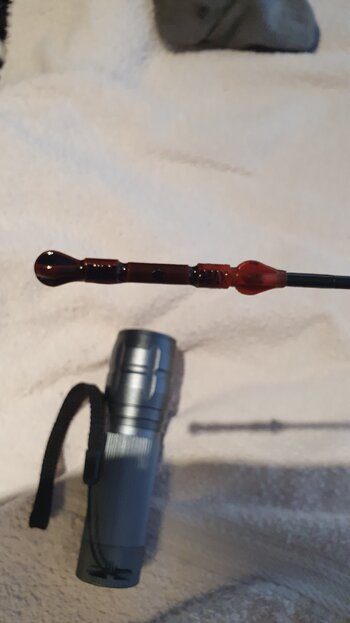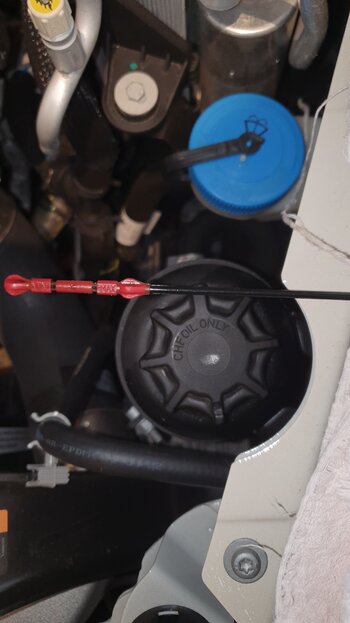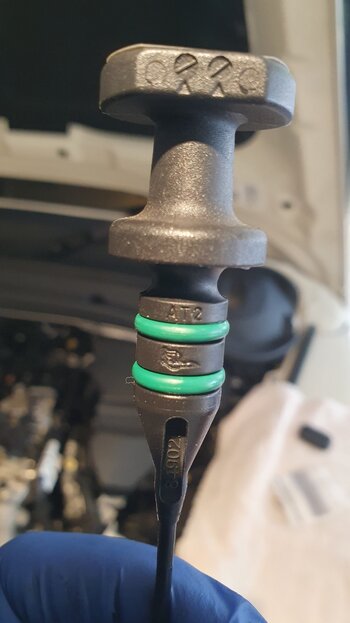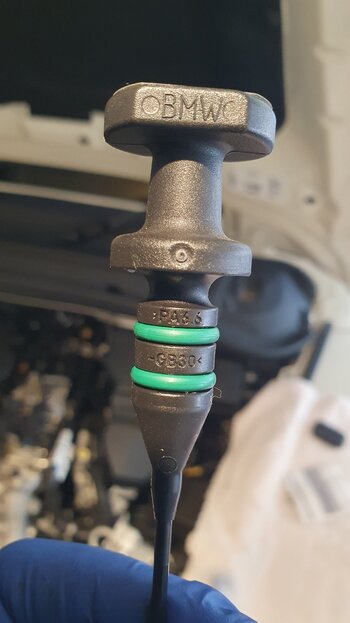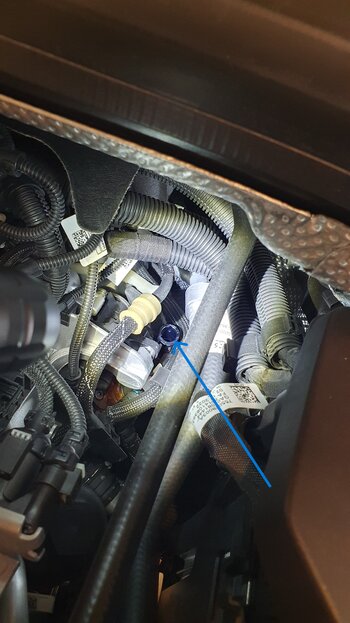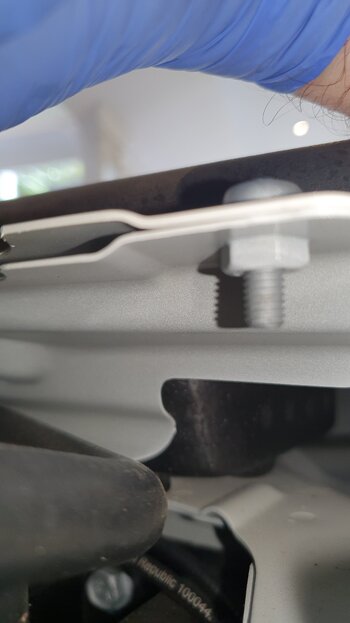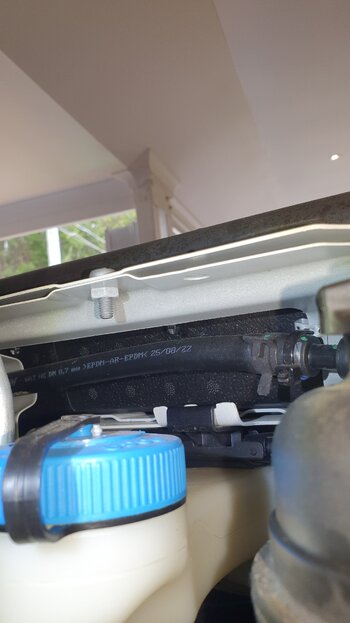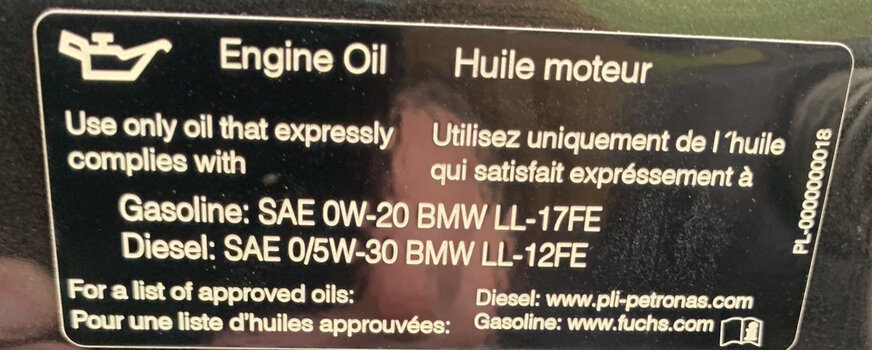"To Dip or not to Dip one's stick" ...an existential question for the B57 diesel...
Today I embarked on a discovery mission to actually find the elusive dipstick ...
First put the bonnet/hood in the maintenance/upright position. This is a straightforward exercise (it helps to lightly lubricate the grommet in the pivoting brackets to facilitate removal/re-installation...
Next: remove the engine cover. Takes less than 10 seconds : carefully lever one corner with two hands then proceed around the perimeter carefully levering the plastic extrusions from the o-ring receptacles...
What a sight to behold!
View attachment 7843068
The dipstick cover is located slightly below the level of the "faded yellow" plastic collar as per the blue arrow
Close up below ---second arrow shows location of oil filter casing. The requisite fastening torque 25 Nm is engraved on the top of the screw-on cover
View attachment 7843070
Below are close-ups of the dipstick in detail
View attachment 7843076
Yes...it has oil... and seems quite full ...though the magic computer indicates it needs another 500ml for both on road and off-road! (after 6,200km).
View attachment 7843071View attachment 7843072View attachment 7843073View attachment 7843074View attachment 7843075
Dip stick receptacle
Other "finds"...
View attachment 7843077View attachment 7843078
sorry for the poor quality of the pics... the macro function on my Samsung 10+ isn't real effective:
Tried to capture the view under the LHS mudguard/fender. When I pushed down from above the metal flexed ever so lightly then I could feel something quite solid underneath. Under the top mudguard/fender panel I could feel a second metal panel...much thicker. Then there's what seems to be a thick solid "pillow" of (guessing here) some sort of black thermoplastic? material which fills the void and distributes any weight resting on the outside of the top panel...I didn't have the courage to "dismount" (Hi JM!

) the mudguard/ fender to find out...
The flat area of the mudguard/fender is quite a bonus. I'm rethinking my original decision not to option the alloy plates. Maybe a cut-to-size section of thick clear vinyl wrap will do for the meantime


